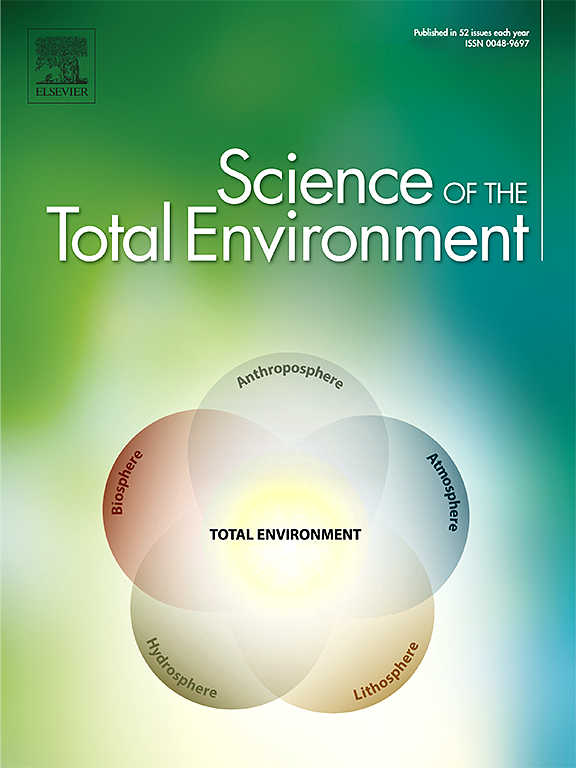Phenyl salicylate induces neurotoxicity and early Alzheimer's disease-like symptoms through ndrg1-regulated myelin damage, increasing bace1 in zebrafish
IF 8.2
1区 环境科学与生态学
Q1 ENVIRONMENTAL SCIENCES
引用次数: 0
Abstract
Phenyl salicylate, an important industrial raw material, is widely used in plastics, cosmetics, and pharmaceuticals. However, little is known about its neurotoxicity on wildlife. Here, we exposed zebrafish embryos at 4 hours post-fertilization (hpf) to 0.025, 0.05, 0.1, 0.25, 0.5, and 1.0 mg/L of phenyl salicylate up to 144 hpf and found its developmental- and neuro-toxicity. Specifically, a dose-dependent increase in mortality and malformation in zebrafish were revealed. Phenyl salicylate also adversely affected the development of monoaminergic neurons, cerebral blood vessels, and the blood-brain barrier (BBB), as well as induced cerebral hemorrhages and locomotion change. RNA-sequencing results combined with verification data showed that phenyl salicylate downregulated the expression of the N-myc downstream regulated gene-1 (ndrg1), caused myelin damage in zebrafish, and then increased expression of beta-secretase 1 (bace1), which ultimately led to early Alzheimer's disease (AD)-like symptoms, including BBB leakage, bleeding in the brain, and upregulation of the glial fibrillary acidic protein gene (gfap) and cholinergic system-related gene (chrna7a). In conclusion, phenyl salicylate exposure triggered developmental toxicity and neurotoxicity in zebrafish, which has a potential risk for the development of AD. Given the effects of phenyl salicylate exposure to ecosystem, the safety usage limit should be treated with caution.

求助全文
约1分钟内获得全文
求助全文
来源期刊

Science of the Total Environment
环境科学-环境科学
CiteScore
17.60
自引率
10.20%
发文量
8726
审稿时长
2.4 months
期刊介绍:
The Science of the Total Environment is an international journal dedicated to scientific research on the environment and its interaction with humanity. It covers a wide range of disciplines and seeks to publish innovative, hypothesis-driven, and impactful research that explores the entire environment, including the atmosphere, lithosphere, hydrosphere, biosphere, and anthroposphere.
The journal's updated Aims & Scope emphasizes the importance of interdisciplinary environmental research with broad impact. Priority is given to studies that advance fundamental understanding and explore the interconnectedness of multiple environmental spheres. Field studies are preferred, while laboratory experiments must demonstrate significant methodological advancements or mechanistic insights with direct relevance to the environment.
 求助内容:
求助内容: 应助结果提醒方式:
应助结果提醒方式:


